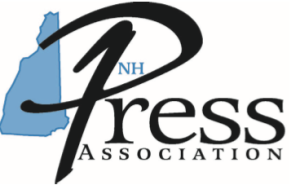
Last year was the fourth consecutive year that the bear population estimate was above the state’s objective of 3,500 to 5,500 bears, according to the department’s population model.
“Our model shows the bear population has remained above our goal of 3,500 to 5,500 bears since 2021, and that matches up with other indicators of population size that we track,” said Jaclyn Comeau, the department’s lead bear biologist. “High rates of hunter harvest, growing numbers of bears killed by vehicles and increasing conflict between bears and people over the past several years all support that our model is reflecting real population growth.”
To understand what is driving this apparent growth, the department launched a new research study this past summer. The research will ground-truth model results by gauging how successful Vermont’s bears are at raising their young safely to independence.
“Anecdotally, we are hearing about more bears with large litters of three or four cubs,” said Comeau. “And in our hunter harvest data we are seeing a larger proportion of young adult bears in the two- or three-year range. We think this is a result of several years of healthy bears having many cubs, coupled with the resources for those bears to help their cubs survive until they can fend for themselves. Our next step is to see if that explanation, which we think is likely, lines up with conditions on the ground.”
The new study will test the department’s hypothesis by following 18 adult female bears who were fitted with GPS collars this past summer. Biologists will visit the collared bears’ dens during the winter to confirm litter size and will then track the family units through the cubs’ first year. The results will strengthen the department’s understanding of bear reproductive success and whether it might be driving population growth.
“We expect to have some takeaways from this study at the three to five year mark,” said Comeau. “In the meantime, we ask Vermonters to keep up all the best practices of living alongside our plentiful black bears. Keeping trash secured where bears cannot get it, protecting backyard chickens with an electric fence and keeping birdfeeders down until there is consistent snow on the ground are the basic responsibilities of living in bear country.”
Vermont’s bear hunting season runs from September 1 through November 14 this year.
It is legal to take a bear that has been collared for the study. If they do, hunters are asked to contact the department and to treat the GPS collars with care until they can be returned to a state biologist. Hunters are reminded to pay close attention before taking a shot to avoid killing a bear accompanied by cubs.
“We ask the hunting community to keep up their good track record of bringing harvested bears to a biological checking station, and sending in a tooth sample from their harvest for analysis as is required by law,” said Comeau. “Hunters’ support is essential for us to keep building our population model on good data. By the same token, in the unlikely event that a hunter harvests one of the bears collared for this study, we’ll depend on that hunter’s cooperation to retrieve the bear’s collar and the data it contains.”
Vermont Increases Penalties For Poaching
Poachers will face stiff penalties in Vermont including a doubling of the fines thanks to changes, which are now in effect and were included in Act. 47 passed by the Vermont legislature in the spring.
Poachers who illegally shoot deer, bear, moose, or wild turkeys now face higher fines and jail sentences. Maximum fines have doubled from $1,000 to $2,000 with a potential jail sentence of up to 60 days for the first offense. A second offense now brings a maximum fine of $5,000 and potential jail sentence of up to 180 days.
The same penalties also now apply for possessing, transporting, buying or selling big game; violations of threatened or endangered species laws; interference with hunting, fishing or trapping; and illegal commercial importation or possession of wild animals.
New Hampshire Fish And Game To Hold Biennial Hearings
Do you want to be heard about any issue involving Fish and Game? Upcoming biennial hearings are your opportunity.
The New Hampshire Fish and Game Department will hold two biennial hearings this fall, giving the public an opportunity to offer input on any aspect of the Department’s operations. The two sessions will be held on:
Tuesday, September 16 at 6:30 p.m. at the New Hampshire Fish and Game Department’s Region 1 Office on Route 3, 629B Main Street, Lancaster.
Tuesday, October 21 at 6:30 p.m. at New Hampshire Fish and Game Department Headquarters, 11 Hazen Drive, Concord.
“We welcome hunters, anglers, and others who care about wildlife and conservation in New Hampshire to attend one of these biennial hearings and share their ideas about how we can serve you better,” said Stephanie Simek, Executive Director of the New Hampshire Fish and Game Department.
Biennial hearings are held in odd-numbered years to provide the public with an opportunity to comment on and suggest changes to fishing and hunting rules, wildlife management strategies, and other Fish and Game functions. Members of the New Hampshire Fish and Game Commission, Executive Director Simek, and other Fish and Game staff will be present at the hearings to hear suggestions from the public.
Bits and Pieces
New Hampshire’s fall turkey hunting season opens on September 15 for archers and runs October 13–19 for shotgun in designated Wildlife Management Units. Hunters who did not fill both of their turkey tags during the 2025 spring season may harvest one bird during either the fall archery or shotgun season.
WMUs that have a fall shotgun season include: D2, H1, H2, I1, J2, K, L, and M. Hunters will continue to have the option to register their birds either online or in person. Regardless of registration method, hunters must affix the tag that is issued with their hunting license to the bird immediately after harvest, and all birds must be registered within 24 hours of take.
To register your bird in person at a check station, visit https://www.wildlife.nh.gov/hunting-nh/check-stations-registration to find the nearest participating location.
Birds not registered in person must be registered online at https://www.wildlife.nh.gov/hunting-nh/turkey-hunting-new-hampshire/registering-turkey-online.
***
The 2026 New Hampshire Wildlife Calendar is an anticipated and effective fundraiser for schools, clubs, and community groups and it supports NHFG's work conserving wildlife and wild places. The award-winning calendar features: gorgeous wildlife photography; important Granite State hunting, fishing, and outdoor recreation dates; and wildlife-watching tips. The 2026 New Hampshire Wildlife Calendar is in stock and ready to ship or be picked up at NHFG Headquarters, 11 Hazen Drive, Concord. As you consider your future opportunities, you can be sure that your organization will be prepared by raising money now.
Get a calendar sales kit or more information for your group or business today by emailing Jay Martin at Jay.Martin@wildlife.nh.gov.
Parting Shots
Friday, was warm and sunny and Oak and I went in our spring fed pond for what may well be the last time this year. Always cool, the water felt really cold. I love fall but will miss the summer that seemed to speed by far too fast.
Syndicated columnist Gary W. Moore may be reached by e-mail at gwmoore1946@icloud.com or at Box 454, Bradford, VT 05033.
copyright 2025 Gary W. Moore
Have a story?
Let's hear it!
(802) 757-2773
(603) 787-2444
news@thebridgeweekly.com




